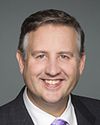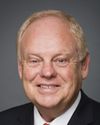Thank you. It's my pleasure.
I think we're on the same page with respect to working as locally as possible with the local stakeholders, individual communities, and jurisdictional governments. Those more local are always more informed on what the issues are, what the desires are, what some of the best practices are. We've always worked hand in hand with the jurisdictions, and we work even more closely than we have previously worked at the community level.
With the guidance of our advisory group of northerners, we've really upped our game in terms of spending time in the communities well ahead of going in on the ground, first of all to explain our intentions and what we are trying to achieve, and to hear from them how best we might plan to achieve that as well as to better understand their concerns. We can then explain some of the technical tools in our tool box. By working with communities we can plan a much better approach. We can start to generate interest from the community and perhaps even get participation with us out on the land.
Many northern communities, both first nations and Inuit, have a lot of the land skills we need, and we can bring some of their promising students with us. We bring elders from the communities out to our camps to demonstrate how we're taking care of the land while we're temporarily out there for six or eight or ten weeks in the field season.
We return to the communities. Once we have our preliminary results, we take time on the way out of the field season to close the loop with teachers in the schools to let them know a little bit about what we found out. We talk to the hamlet councils and the HTAs, the hunters and trappers associations. We can't divulge specific details. We want to wait for public, simultaneous release of that, but we absolutely let them know about the general things we found out there on the land.
We're increasingly returning to the communities during the school year to visit the schools, to bring rocks that we found in their backyard back into the community so we can show the kids who didn't come to the field with us. We're working diligently to instill in the communities the idea that beyond their traditional knowledge of the land there's accessible scientific knowledge that they can also benefit from in their land use decision-making, beyond economic decision-making.
My personal belief is that there's very little we do as scientists that can't be explained appropriately in simple terms. We can do this with school kids. We can do this with hamlet councils. We can do this with regional associations. By building that comprehension of the value of basic geoscience knowledge--and whether it's for environmental management or parks planning or investment decisions, it's that same fundamental knowledge--we can help the local people understand the knowledge we generate so they can make better decisions at their own community scale, or at the scale of their region, and the knowledge can also be used externally by the private sector. It's all the same knowledge base. It serves many decision-making masters.





